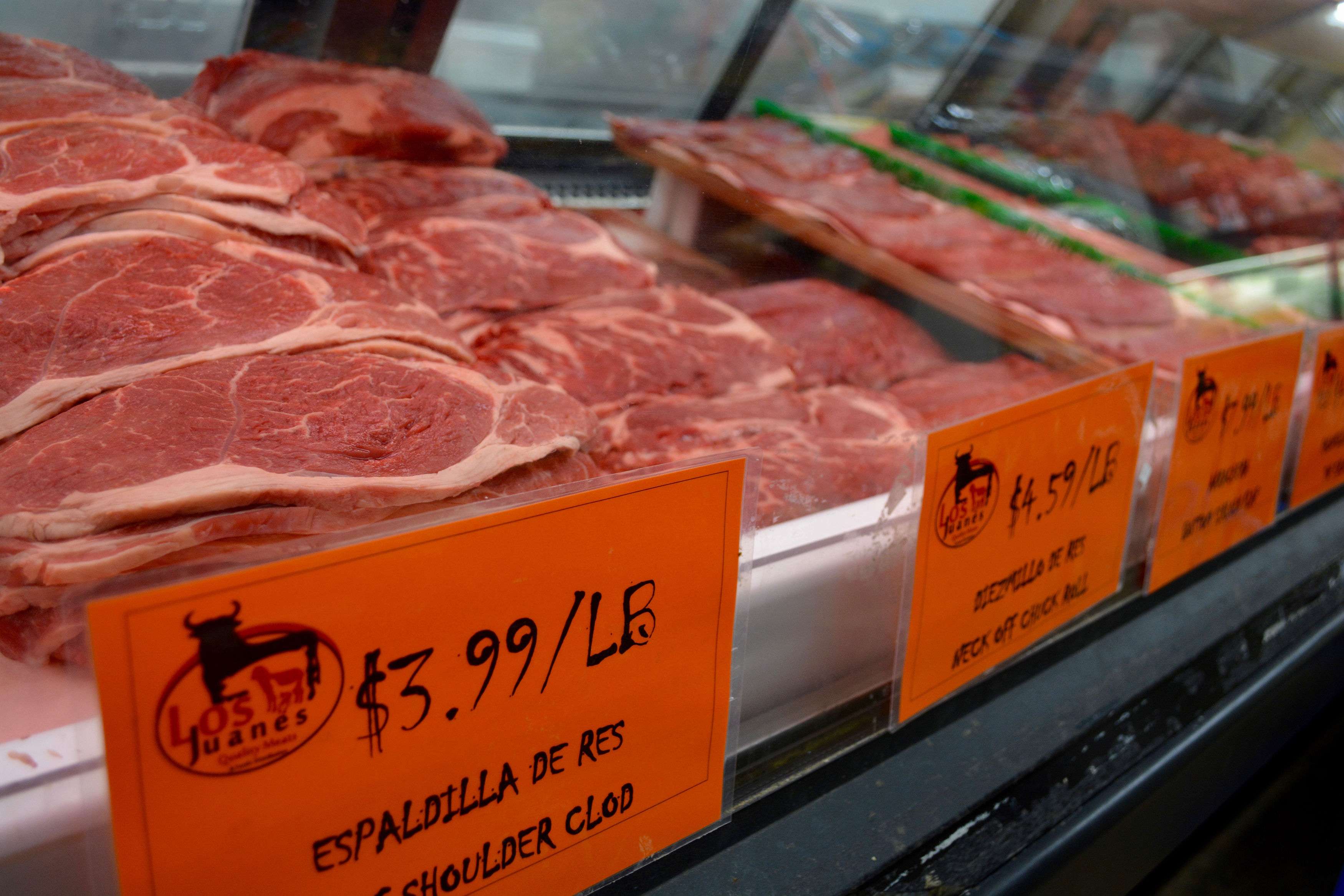Discover Fresh Cuts at Bagley Farms Meat Market Edwardsville IL for Your Following barbeque
Discover Fresh Cuts at Bagley Farms Meat Market Edwardsville IL for Your Following barbeque
Blog Article
Reveal the Art of the Butcher's Cut in a Modern Meat Market
In the ever-evolving landscape of modern meat markets, the butcher's cut has transcended its traditional roots, combining age-old workmanship with modern techniques. What truly sets the contemporary butcher apart is their ability to build a much deeper connection in between customers and the origins of their meat.
Development of Butchery Strategies
The evolution of butchery strategies mirrors a rich tapestry of technology and adaptation driven by advancements in technology, adjustments in customer need, and a deeper understanding of meat science. Historically, butchery was a craft gave through generations, with techniques developed over centuries to optimize yield and flavor. However, the industrial change introduced mechanization, changing traditional techniques and enabling large processing.
The mid-20th century saw butchery strategies better improved by clinical understandings into muscular tissue biology and meat aging, enhancing both inflammation and preference. Innovations like vacuum cleaner product packaging and refrigeration extended product shelf-life, allowing butchers to expand offerings and boost quality assurance. This duration likewise noted the rise of specialized equipment, such as band saws and meat slicers, which raised precision and performance in meat processing.

Electronic systems currently help in monitoring pet provenance and optimizing cuts to meet particular client preferences. Additionally, a rebirth in artisanal butchery has emerged, blending conventional skills with contemporary expertise to provide to customers looking for moral and sustainable meat choices.
Recognizing Meat Cuts
Recognizing the ins and outs of meat cuts is essential for both butchers and consumers looking for quality and worth. Each cut comes from a various component of the pet, passing on unique tastes, structures, and food preparation approaches - bagley farms meat market edwardsville il. Proficiency of these distinctions not only enhances cooking experiences but likewise makes the most of the utility of each carcass. For butchers, exact cuts show ability and respect for the craft, guaranteeing minimal waste and optimal return.

Understanding muscular tissue structure is vital; muscular tissues utilized more regularly by the pet tend to be tougher and are best fit for sluggish food preparation techniques, while less-used muscular tissues, like those found in the loin, are extra tender and perfect for cooking or roasting. Experience with these distinctions encourages consumers to make informed options, improving their culinary undertakings.
Selecting Quality Meat
Choosing the appropriate meat involves even more than simply picking an aesthetically enticing piece from the screen. The art of picking quality meat calls for a critical eye and expertise of certain features that signify freshness and excellence.
Secondly, take into consideration the marbling, which describes the white streaks of fat within the muscle. Appropriate marbling is an essential indicator of inflammation and taste, as it melts during cooking, improving the meat's juiciness. Remember, greater marbling frequently associates with superior quality cuts, such as USDA Prime.
Texture is an additional important aspect; meat ought to really feel solid to the touch, not slimed or excessively soft. Furthermore, be mindful of the aroma. Fresh meat should have a tidy, neutral smell, totally free from any type of sour or repulsive odors.
Coupling Cuts With Food Preparation Techniques

Conversely, harder cuts like brisket and chuck roast are abundant in collagen, which breaks down into jelly when prepared slowly. These cuts are ideal for braising or sluggish roasting, permitting the meat to tenderize with time and create deep, intricate flavors. Cuts such as brief ribs and pork shoulder fare well you could try this out with slow-cooking methods, where expanded cooking times change their robust structures right into succulent meals.
Lamb shanks and oxtail, which need prolonged cooking to tenderize, are best candidates for cooking or slow simmering. These techniques coax out rich, passionate tastes while keeping wetness. By understanding the unique attributes of each cut, cooks and home cooks alike can boost their cooking productions, guaranteeing each dish is both pleasing and memorable.
The Butcher's Duty Today
Browsing the advancing landscape of the modern-day meat market, the butcher's duty today expands past simple prep work of cuts. Contemporary butchers are culinary artisans, teachers, and advocates for sustainable practices. They link the gap between the ranch and the fork by making sure honest sourcing, understanding animal husbandry, and prioritizing openness in the supply chain. This shift shows the growing consumer need for high quality over amount, where provenance and animal welfare are extremely important.
In enhancement to crafting exact cuts, butchers currently involve directly with clients, offering cooking recommendations and customizing selections to match specific demands and choices. Their knowledge in meat aging, marbling, and flavor profiles encourages consumers to make informed choices, boosting their cooking experiences. This personalized solution exemplifies the butcher's developing function as a relied on expert in the kitchen.
Moreover, butchers are essential in minimizing waste, making use of whole pets to produce diverse items such as sausages and supplies. This detailed approach not only appreciates the animal yet likewise lines up with modern sustainability objectives. In this method, the modern-day butcher personifies both practice and technology, adjusting to an ever-changing market while maintaining the creativity and stability of their craft.
Verdict
The contemporary butcher's craft elaborately weaves conventional strategies with modern technologies, stressing lasting practices and read here moral sourcing. Proficiency in comprehending diverse meat cuts and high quality indicators equips butchers to offer educated suggestions, straightening certain cuts with ideal food preparation approaches. This knowledge not just elevates culinary experiences however also reinforces the connection between consumers and the beginnings of their food. By recognizing historic methods while accepting modern demands, the butcher's duty stays crucial in today's innovative meat market (bagley farms meat market edwardsville il).
Report this page